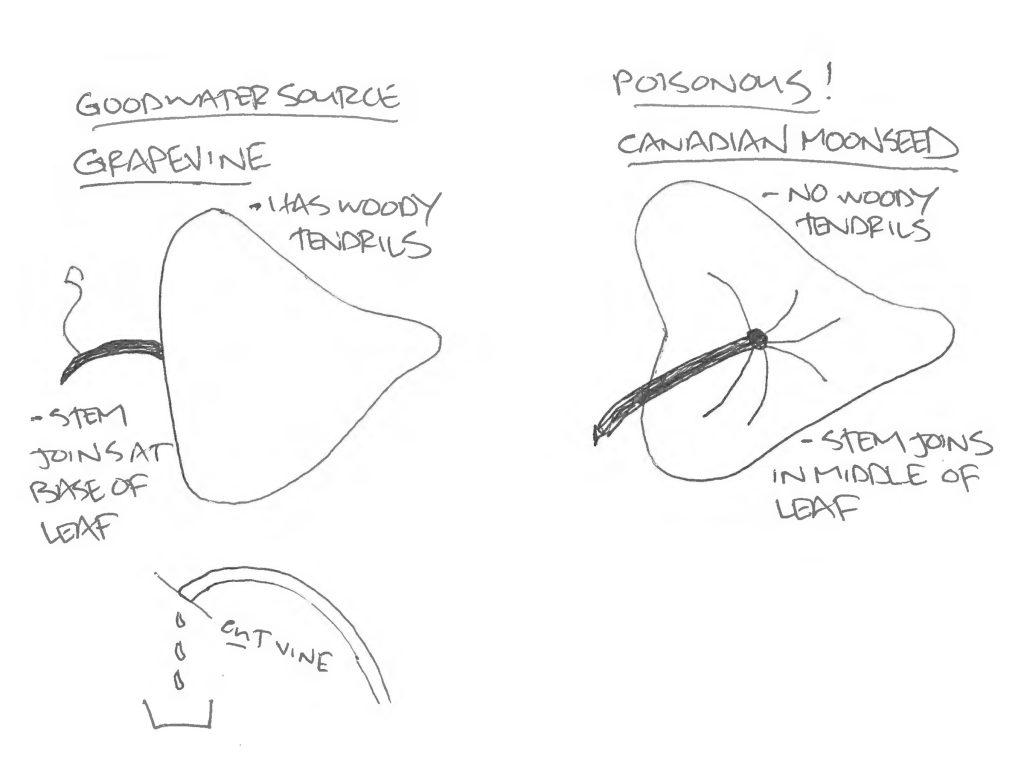After locating viable shelter, water is the next essential item in the Shelter – Water – Fire – Food list.
- To many native peoples, water is the lifeblood of the Earth and all its creatures. Water is a vital part of the ritual and ceremony of most world religions, including Christianity, Islam, Judaism and Shintoism, often with a purifying function. Religious ceremonies often include ritual cleansing. Treat water with respect.
- You can survive 30+ days without food, but only 2-4 days without water. Water most always takes priority over food.
- Most water you gather must be purified of impurities and parasites. Of primary concern is the giardia lamblia parasite, more commonly known as giardia, which is spread through feces, mainly muskrat, beaver, cattle, and humans.
- Water can be purified by using a water filter, iodine tablets, or by bringing it to a boil. In a true survival situation where these treatments are not readily available, you can boil water by adding heated rocks to a bowl or container of water.
Other Options for Water Sources
- If you can find a stream, you are likely to find a spring or snowmelt that is a safer water source. Look for signs of muskrat or rodent activity at the source.
- Dew Wipe: Drag spongy material through vegetation. Wring it out in your mouth or a container.
- Build a Solar Still
- Plant Sources
- Thistle, or “survival celery”. Bull Thistle, Scottish Thistle, and Elk Thistle are some of the common variants. Cut off the spines, chew it up for its juices, then spit it out. *Avoid thistles that are milky.*
- Grapevines. Look for finger-think grapevines, cut across the vine for a source that should drip for a couple of days. Note, this method will kill the grapevine. Watch out for its poisonous look-alike, Canadian Moonseed.

- Tree Tapping: Maples, Sycamore, Hickory, Birch, Walnut, Box-Elder.
- Tree tapping requires a tree that is at least a foot in diameter, a sharp object, and a hollow tube, such as a reed.
- Tap the sunny side of the tree, perhaps over the largest root
- Cut through the outer and inner bark to the cambium
- Plug the hole with hardwood and seal with pitch when done
